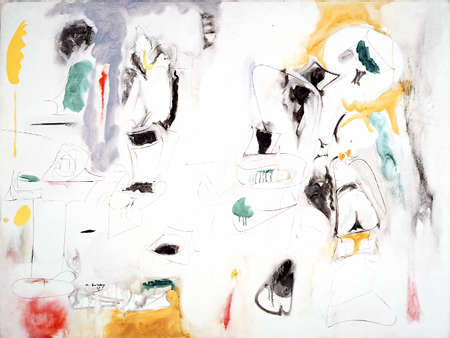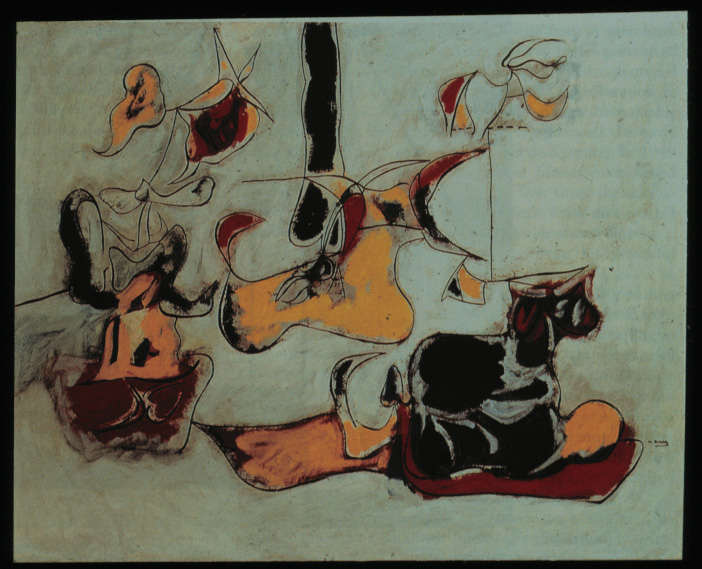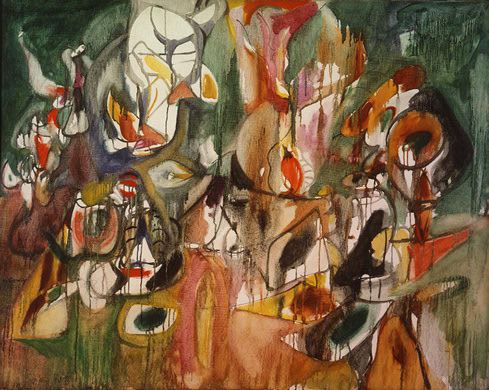January 03, 2004
surrealism & sexuality#3
I'm continuing my probing of surrealism and sexuality without much success. Weren't they supposed to be obssesed with desire unbound and sexuality? Consider this quotation:
"Adding greatly to Surrealism's scandalous appeal was the fact that, for the first time in an artistic movement, sex was give centre stage. Freud had already flagged-up the fact that sexual instincts and their sublimation lay at the core of the individual and of civilisation as a whole, but never had human sexuality in all its multifarious and often darkly perverse forms been so comprehensively celebrated as by the Surrealists.The word desire runs like a silver thread through the poetry and writings of the Surrealist group in all its phases," says Jennifer Mundy, curator of the Tate Modern's Surrealism: Desire Unbound which has Surrealism's obsession with our multifarious erotic urges as its central theme."
I'm staying with the Armenian-American painter Arshile Gorky for the moment because his late work was concerned with unlocking a network of symbols in which to recast the triumphs and tragedies of his own troubled life. It appears a good space to explore.
These paintings were a kind of diary that can be read as a commenting on his life.

Arshile Gorky, Agony, 1947
What interests me here is the visual metaphors of felt new experience; or more accurately, the creation of new forms through a reworking of the old forms of the visual tradition. That reworking by the avant garde comes through an understanding of the tradition from which it is both a departure and a continuation.
My interest is less trying to understand what the surrealists were reacting against than the content they expressed in the new forms.
With Gorky we do have the remembrance of things past, as with this image:

Arshile Gorky, Garden in Sochi, 1943
But I'm not having much luck with the new forms for the expressions of the new experiences of sexuality.
The above work, Garden in Sochi, was produced when the surrealists were in exile in the US during WW 2: it is a confluence of the American and European avant garde.

Arshile Gorky, One Year the Milkwood, 1944
It is close to the automatism of surrealism with its rapid drawing and loose brushwork that encouraged the spilling and dripping of the liquid paint. It also overlaps, or rather points to the drip style of the abstract expressionism of a Jackson Pollock. Gorky can probably be see as a key forerunner of abstract expressionism.
After the war the surrealist emigres packed their bags and returned to Paris to heroically regain their position as the cutting edge of the avant garde when existentialist was the intellectual fashion.
That leaves us with Gorky. In his One Year the Milkwood there is no expression of unconscious sexuality. The above painting is fuull of nice autumn colours and thus refers to the fertility of nature.
Maybe I'm looking in the wrong space. Maybe Gorky wasn't really a Surrealist.
Maybe the surrealist's erotic drawings were published in small editions and often anonymously to avoid censorship and prosecution?
Posted by Gary Sauer-Thompson at January 3, 2004 02:42 PM | TrackBackTry looking a Matta's work for abstract surrealist sexuality
Posted by: G B on August 4, 2005 02:43 AM